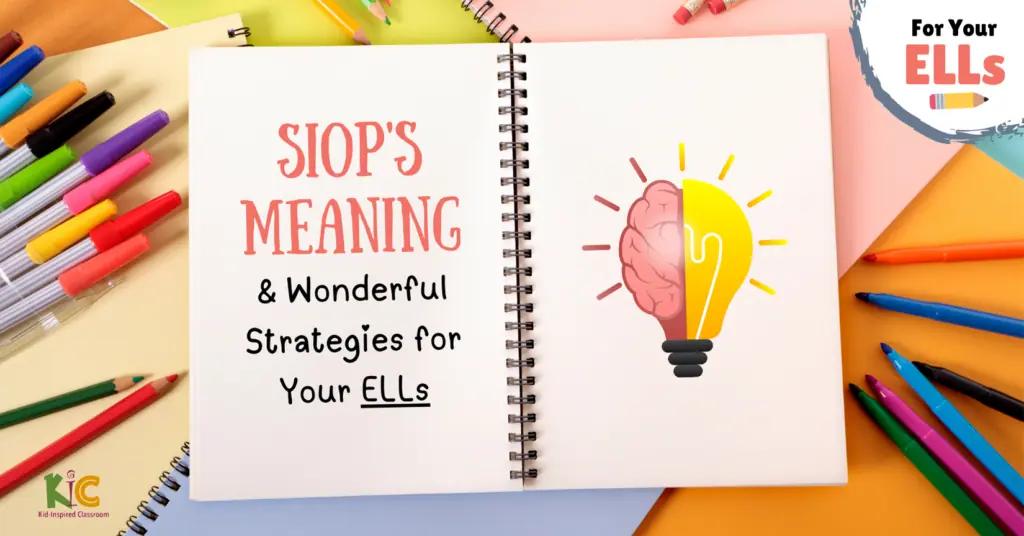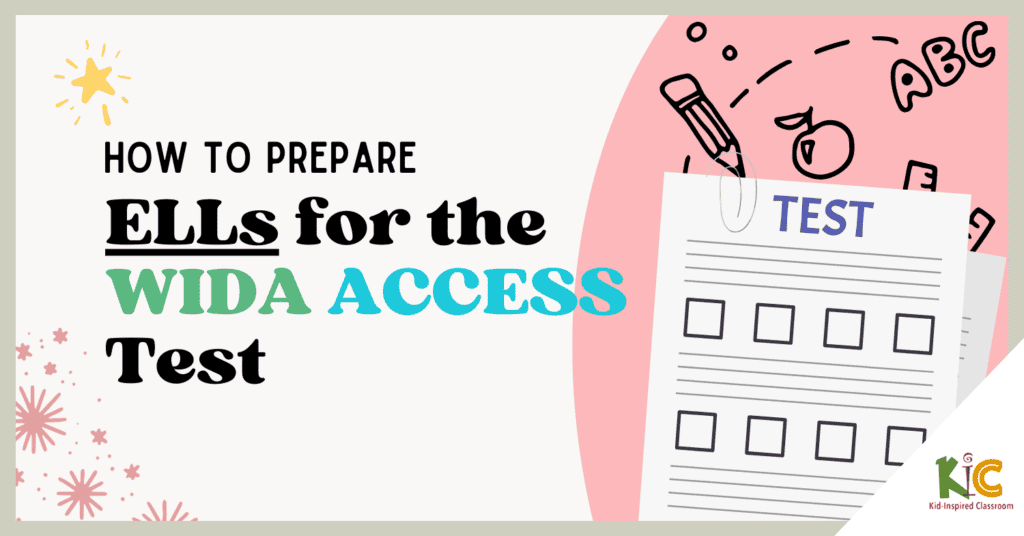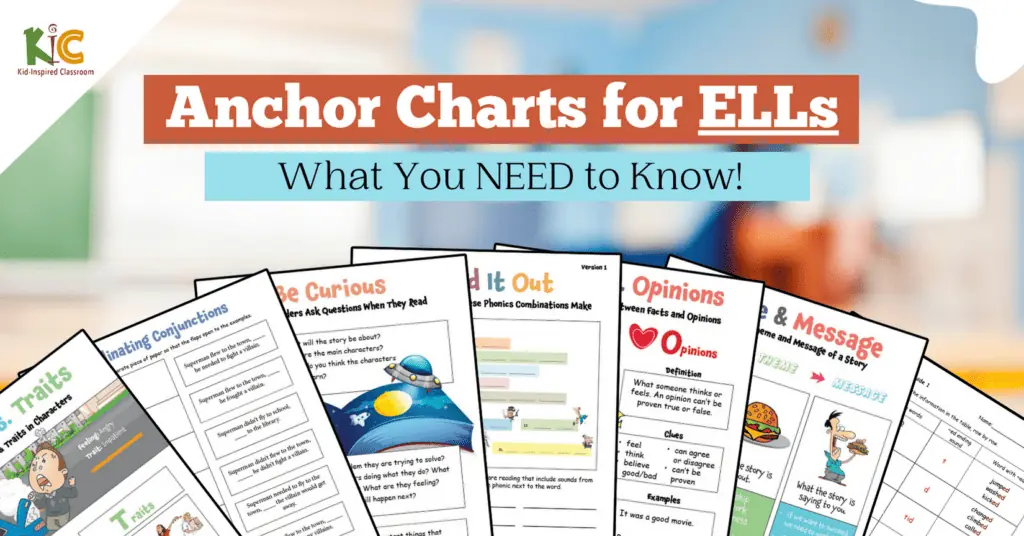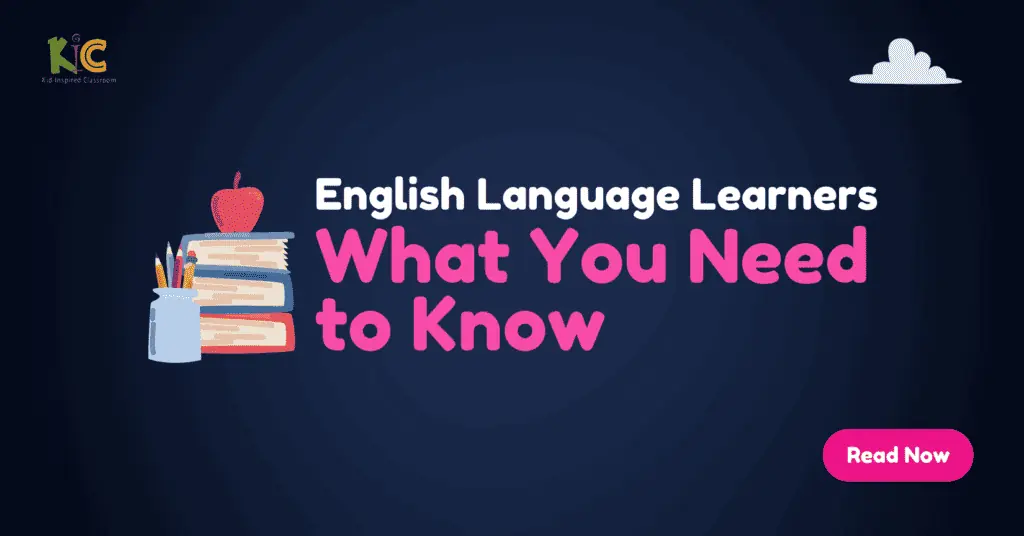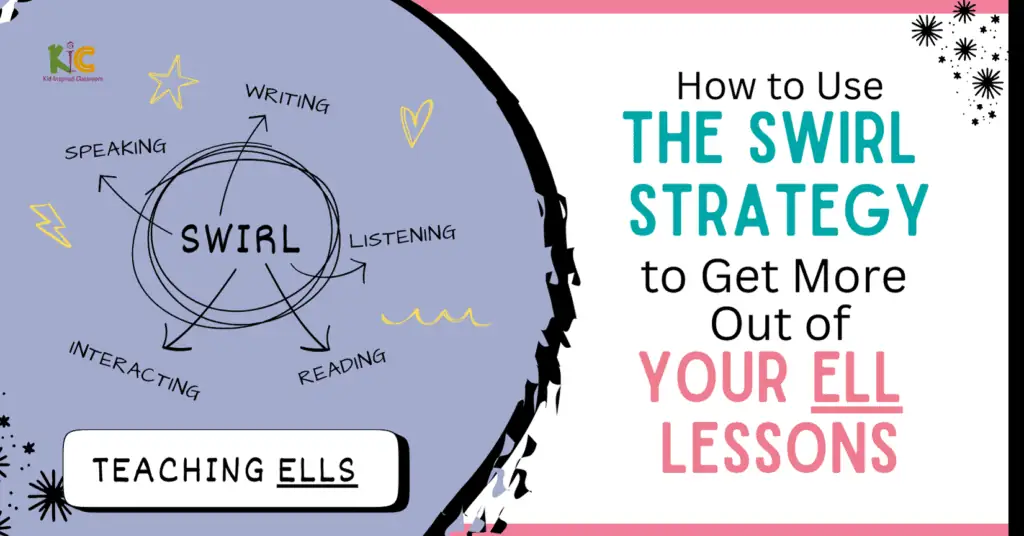
What is the SWIRL Strategy for Working ELLs
The word SWIRL always makes me think of a toilet bowl flush which is why I was really surprised to find it being mentioned a lot amongst teachers of ELLs.
Turns out, SWIRL is a simple and wonderful way of thinking about how you organize your lessons with your ELLs.
The acronym SWIRL stands for Speaking, Writing, Interacting, Reading, and Listening.
This strategy aims to create a balanced approach to language learning by emphasizing the development of both receptive (listening & reading) and productive (speaking & writing) language skills.
Students get good at what they practice. If you only read, they will improve in reading words on a page, but not necessarily at speaking, writing, vocabulary, or content knowledge. The same goes for listening. If students only ever listen, they will be able understand fairly well, but struggle to speak, read, or write.
Overview of the SWIRL Strategy for Teaching ELLs
Here’s a quick overview of each of the letters of SWIRL:
- Speaking: ELLs need to talk. A lot. This can include activities such as discussions, debates, presentations, role-playing, and group conversations. The focus is on developing fluency, accuracy, and confidence in spoken English.
- Writing: ELLs need lots of low-pressure opportunities to put down ideas or summarize content by writing. This can involve various writing tasks such as essays, reports, summaries, creative writing, and journaling. The emphasis is on developing grammatical accuracy, vocabulary usage, organization, and clarity in written expression.
- Interacting: Too often, teachers talk at the front. Students sit and listen. I like that the “I” in SWIRL is in the middle because I feel like it is the core to everything else. Students should be engaged in every activity of your class. It should not be the teacher talks for 90% of the time and then the students write for 10%. This can include pair work, group projects, problem-solving tasks, and simulations. The goal is to encourage active participation, negotiation of meaning, and the development of social and interpersonal skills.
- Reading: Reading is obviously a major priority for our students. Any and all reading is helpful. This can be articles, short stories, jokes, sample texts, and excerpts from books. Students can be asked to read for specific purposes, engage in discussions about the text, and develop reading strategies to improve their comprehension skills.
- Listening: Listening is sort of automatically involved in every class since you and the students will be talking and others will be listening. Just be careful not to assume that just because something was said that all of the students were listening. Listening activities need to put all students on the spot to respond. This is why turn and talk activities are so effective when you are teaching students content. Listening activities can audio recordings, watching videos, participating in turn and talks, and engaging in class discussions or debates based on the listening material. The focus is on developing students’ ability to understand spoken English and respond appropriately.
No 1 of these skills is more important than the others. They all need to be developed together. Many activities will involve more than 1 of these skills at the same time. That doesn’t necessarily make it easy though. Here are some thoughts on how to utilize SWIRL with your students from teachers who have used it themselves.
Thoughts On How to Utilize This SWIRL
These were ideas shared by some of the beloved teachers in our Engaging ELLs Facebook group. I’ve left off their last names for privacy.
1. Check Chart: This comes from a teacher named Sheri. She says, “I have a check chart on my wall. At the end of the lesson we check off what we did. We shoot for reading, writing, listening, and speaking every lesson.”
2. Each Lesson: 1 Input (listening, reading) & 1 Output (speaking, writing): This comes from a teacher named Sarah. She says, “My suggestion from a college course I took was to think about each lesson as needing at least 1 input (listening or reading) and at least 1 output (speaking or writing). Throughout the week, students need to interact with the content through a variety of inputs and outputs. Subjects should include all components but it’s unrealistic to do all in one lesson, rather thinking about a week at a time (meaning each subject should cover each domain weekly).
3. How to Include Interactivity: From me: “I think for the interactive part, it is enough to just get them involved in every activity. Too often, as teachers, we spend too much time at the front talking and we need to turn it over to the students as much as possible. That could be games and activities with flash cards for vocabulary, think, pair, share for concepts and grammar, etc.”
4. Backwards Plan Lessons: This comes from a teacher named Lindsey. She says, “I ask teachers to backwards plan and think about each step of a lesson. How will students interact with each other? How will they read info, write about it and talk about it? Even if it is just for a moment to jot a thought, share it with another and read theirs, kids need multiple opportunities to use English!!”
5. Speaking First: This is definitely a favorite of mine. This comes from a teacher named Beth. She says, “I think before writing, when able, you should always have students orally tell their writing (speaking) to a partner first. That way they can get their thinking on paper or at least brainstorm plenty of ideas they could include and provide sentence frames with some guided practice depending on the skills already taught and learned by students..” Starting with speaking helps students focus on content first without having to worry about reading, spelling, or grammar. Brainstorming a bunch of ideas first helps spark creativity and interest.

How About You?
- How have you used the SWIRL Strategy with your students?
- How are you planning on using the SWIRL strategy with your students?
- What have I missed in this article?
